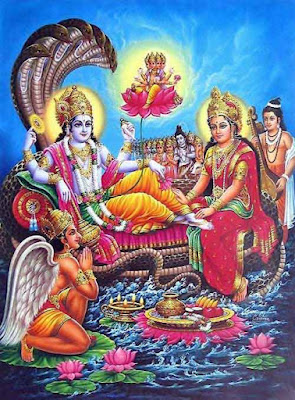Jagannath Puri Rath Yatra 2025
Rath Yatra Puri - A must carry out Pilgrimage by a Hindu in lifetime
Puri Jagannath Rath Yatra - Fully Explained from Start till completion
Rath Yatra at Puri gets 1 Million Pilgrims every year
On Earth, Ratha Jatra, a symbol of equality and integration, is the magnificient festival full of spectacle, drama and colour. The world famous, Puri Rath Yatra attracts more then one million pilgrims every year, from India and also from various parts of the world. Rath Yatra or Chariot Festival is the only day when devotees who are not permitted into the temple can get a chance to see the deities. The Rath Yatra festival at Puri start with the invoking ceremony in the morning and the chariot pulling on the roads of Puri in afternoon. The 3 deities have 3 different chariots - the chariot of Lord Jagannath, Nandighosa, has 18 wheels and is 45.6 feet high, the chariot of Lord Balabhadra, Taladhwaja has 16 wheels and is 45 feet high and the chariot of Subhadra, Devadalana has 14 wheels and is 44.6 ft high. The wooden temples like chariots are constructed a fresh every year and idols of all three deities are also made of wood which are replaced by new ones every 12 years.Significance/Importance of Ratha Jatra
Ratha Yatra is also known as Gundicha Jatra, Ghosa Jatra, Navadina Jatra, Dasavatara Jatra and a few other names. In the words "Rath Yatra", rath means the Chariot and Yatra means travel or journey.There is a Sanskrit proverb "Rathe tu vamanam drishtwa punarjanmam na vidyate" which means a glimpse of the Vamana, the small form, an incarnation of Lord Jagannatha, is sure to ensure moksha that is release from the cycle of birth and death.Rath Jatra is an occassion of the celebration of supreme divinity who has manifested himself in the Kali Yuga to emancipate humanity and to relieve them from their sufferings. Lord Jagannatha is Vishnu or Krishna. A glimpse of Lord Jagannatha on the chariot is truly auspicious one. It is said that even a touch of the chariot or even the ropes with which the chariots are pulled is considered enough to confer the results of several pious deeds or penance for ages. The chariot, the wheels, the grand avenue all become one with Lord Jagannatha himself.
Kathopanishada mentions the concept of the chariot in these words-
"Atmanam rathinam viddhi sareeram rathamevatu, Buddhim tu saarathim viddhi marah pragrahameva cha"which means the body is the Chariot and the soul is the God himself in the chariot. The wisdom is the charioteer to control the mind and thoughts.
Skanda Purana mentions the sanctity of the Rath Jatra in the these words-
"Gundicha mandapam namam yatrahamajanam pura, Ashwamedha sahasrasya mahabedi tadadvabat"For devotees, it is considered the most auspicious occasion when they are able to see the deities of the Srimandira in the Gundicha Temple, the final destination of the procession of the chariots, derive the benefits of a thousand horse sacrifices, an extremely pious deed.
Jagannath Puri Rath Yatra Story
Here at Puri, Lord Jagannatha is worshipped along with his brother Balabhadra and his sister Devi Subhadra. Ratha Yatra celebrates Lord Jagannatha's annual visit to Gundicha Mata temple. King Indradyumna built the Puri Jagannatha temple and his wife Queen Gundicha was so much devoted towards Lord Jagannatha. To honour the devotion of Queen Gundicha, Lord Jagannatha, Balabhadra and Subhadra leave their Dham in the main Jagannatha Puri temple and spend a few days in Gundicha Mata Temple in their honor. Gundicha Temple is cleaned by enthusiastic devotees of Lord Jagannatha one day before Ratha Yatra and this cleaning of Gundicha temple is known as Gundicha Marjanam or Marjan. Hera Panchami is the fourth day after Ratha Yatra celebrated when Goddess Lakshmi, wife of Lord Jagannatha, visits Gundicha temple searching Lord Jagannatha. Hera Panchami is not Panchami Tithi and it is celebrated on the fourth day after Ratha Yatra usually observed on Shashthi Tithi.Lord Jagannatha after Bahuda or Ulta Rath Yatra returns to his main dham or Jagannath Puri Temple just before Devshayani Ekadashi when Lord Jagannatha goes to sleep for four months. Among people of foreign origin who visit the famous Jagannath Temple in Orissa, Ratha Yatra is also known as Puri Car Festival.
Are there two rath yatras and what's there connection?
Dwarka in Gujarat where Krishna's half-cremated body is believed to have been immersed into the ocean is located on the west coast of India and Puri in Orissa- where it is said to have re-emerged as a log - is located in the east. About several hundred years ago, a Hindu saint and priest of a Hanuman temple in Gujarat, Shree Sarangdasji, arrived in Puri to offer prayers at the Jagannathan temple. While sleeping at the temple guest house, he was informed by Lord Jagannathan himself to go back to Ahmedabad in Gujarat and install three idols of Jagannathan, Balbhadra and Subhadra there. After installing the 3 idols there, Ahmedabad Jagannathan Temple was founded.What happens to the chariots and elephants after the Rath Yatra is completed?
After the Rath Yatra festival in Puri is completed, the chariots are dismantled and their wood is used as fuel in the temple kitchens - believed to be the largest in the world that cook 56 types of dishes every day and feeds anywhere between 2,000 to nearly 200,000 people. Elephants are returned to the forests or the place from where they were picked up.Rath Yatra 2025 Date
Rath Yatra 2025 Date - Friday, June 27, 2025Dwitiya Tithi Begins - 01:24 PM on Jun 26, 2025
Dwitiya Tithi Ends - 11:19 AM on Jun 27, 2025








